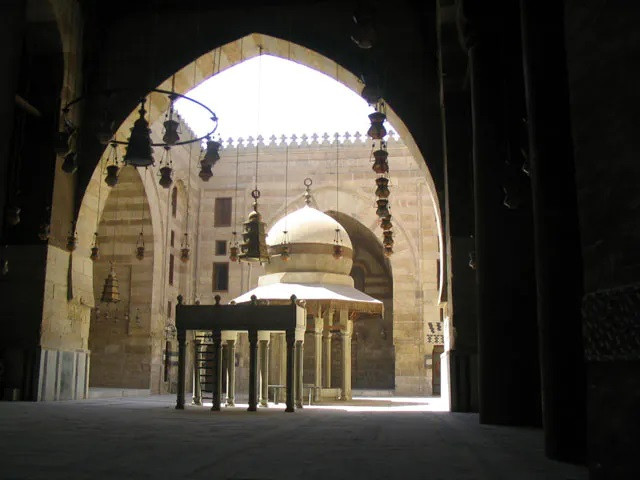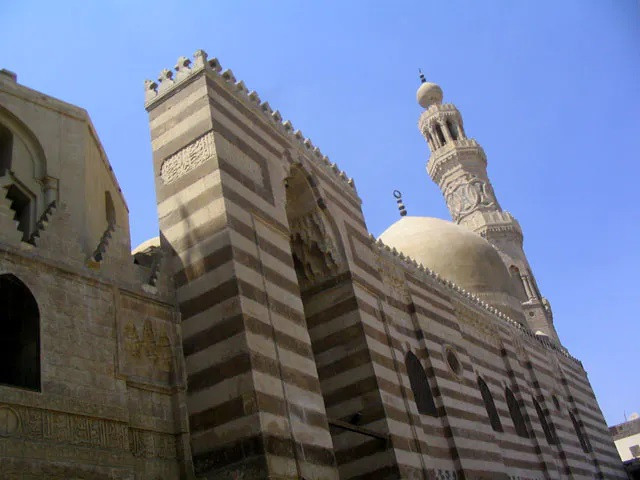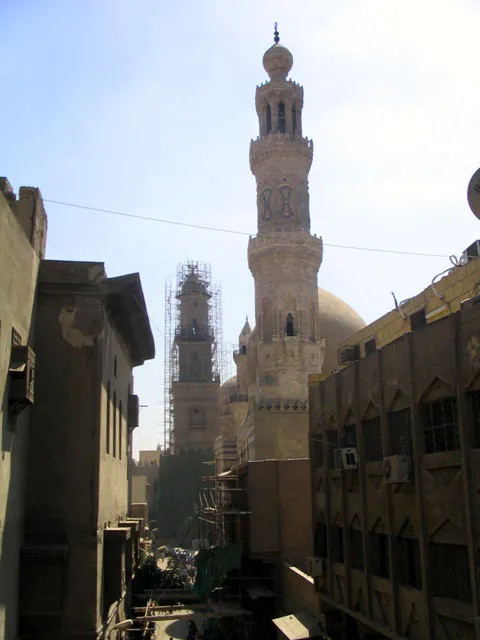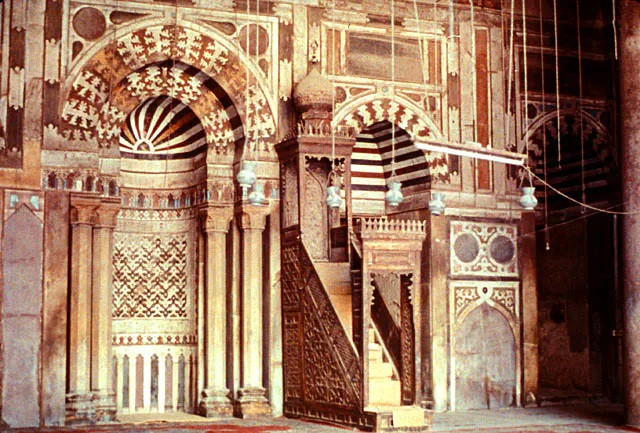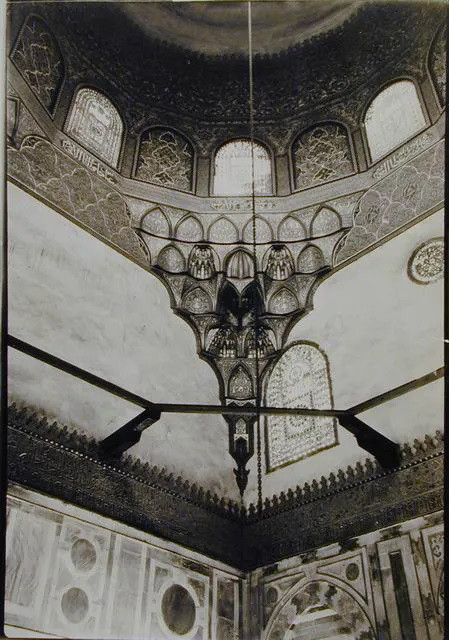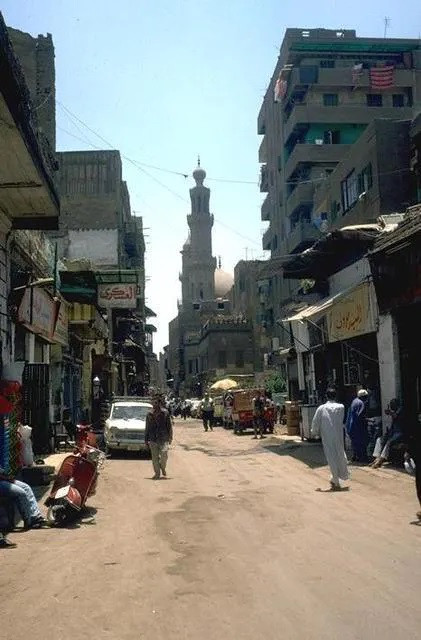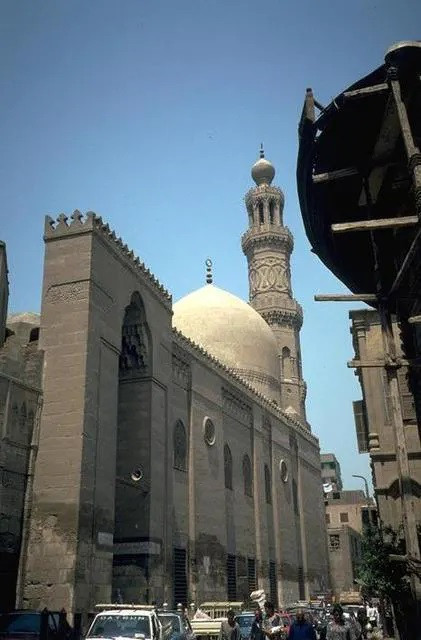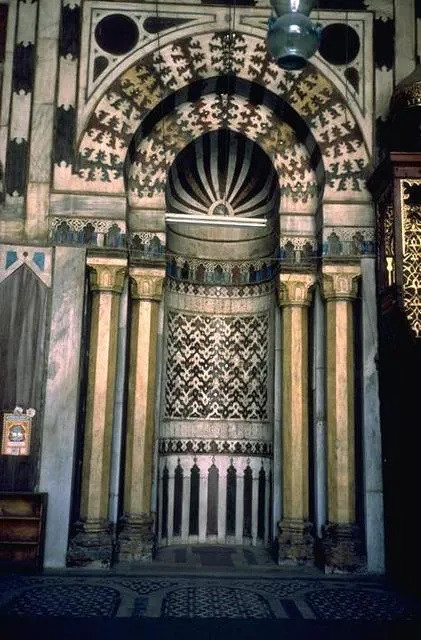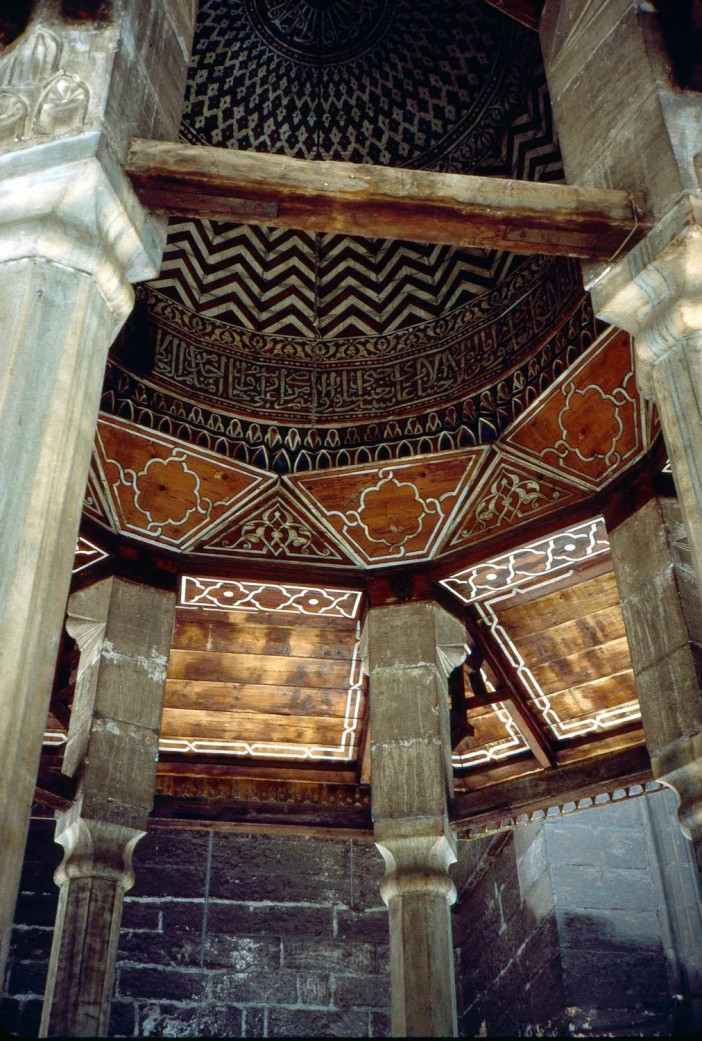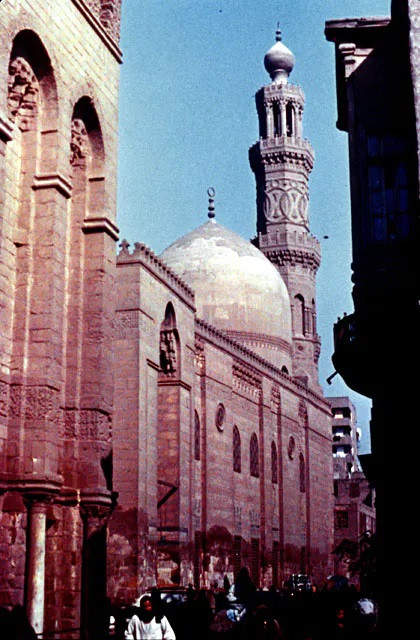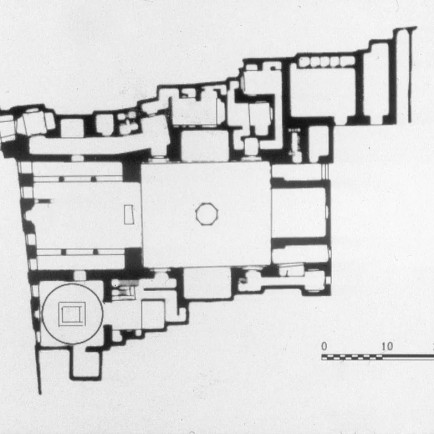Masjid al-Sultan Barquq
History
In the desired Bayn al-Qasrayn region, Sultan Barquq, the founder of the Burji or Circassian Mamluk dynasty, constructed his fortress between 1384 and 1386. A portion of the building was overseen by the architect Shihab al Din Ahmad ibn Muhammad al Tuluni, who came from a family of court surveyors and architects. The inauguration inscription on the front and in the courtyard mention Jarkas al Khalili, the owner of Barquq's horse and the man who founded the renowned Khan al Khalili.
Urban and Architectural
By equating himself with the previous dynasty, the Bahri Mamluks, who were left the responsibility of repelling the Crusaders and Mongols and endorsing Sunni Islam, Sultan Barquq attempted to legitimize his power. By marrying Baghdad Khatun, the widow of Sultan Sha'ban, the last of Sultan Qalawun's descendants, he gained social standing and later had a funeral foundation built for his family. He selected a location near the early Qalawunid monuments on the prestigious al-Mu'izz Street to emphasize the continuity he desired. As a result, there was a continuous wall of contiguous facades with window recesses, portals, crestings, domes, minarets, and bands of tiraz, all of which were constructed in various styles that were competing for visual dominance and attesting to the significant influence Mamluk architecture had in the political sphere. The demolished Fatimid palaces served as the stage upon which each facade represented a historical event.
Description
With its marble paneling, bronze-plate doors, molded stone embellishment, and intricately carved minaret, Michael Rogers has shown that this complex was to set the standard for Cairene architectural decoration between 1400 and 1450. In contrast to most minarets from this era, the octagonal minaret features a shaft with stone carving that, in the 15th century, replaced the inlaid stone work typical of 14th century minarets (e.g., Sarghatmish). Due to the rarity and value of building materials, the royal rank (blazon) is given to everyday items and materials such rough wood and window stucco grilles.
References
https://www.archnet.org/sites/2217
https://earth.google.com/web/search/Masjid+al-Sultan+Barquq/@30.0501398,31.2608829,21.18738367a,899.79329253d,35y,0h,45t,0r/data=CoIBGlgSUgolMHgxNDU4NDFmYzVhOGQzYjJmOjB4M2YxMDY2YjliNjhjNDg1ZBk8fD5vzww-QCEXE_ZI3kI_QCoXTWFzamlkIGFsLVN1bHRhbiBCYXJxdXEYAyABIiYKJAlFUu5XRgs-QBEiIZekQgo-QBk9bC2hkUI_QCGWWRr3lkE_QA
Details
Location
Mosque Sultan Al-Zahir Barquq، 27 الخرنفش، الجمالية، قسم الجمالية، محافظة القاهرة،, Egypt
Worshippers
1050
Owners
Sultan Barquq
Architect Name
Year of Build
1384-1386
Area
2100
Drawings
Map
History
In the desired Bayn al-Qasrayn region, Sultan Barquq, the founder of the Burji or Circassian Mamluk dynasty, constructed his fortress between 1384 and 1386. A portion of the building was overseen by the architect Shihab al Din Ahmad ibn Muhammad al Tuluni, who came from a family of court surveyors and architects. The inauguration inscription on the front and in the courtyard mention Jarkas al Khalili, the owner of Barquq's horse and the man who founded the renowned Khan al Khalili.
Urban and Architectural
By equating himself with the previous dynasty, the Bahri Mamluks, who were left the responsibility of repelling the Crusaders and Mongols and endorsing Sunni Islam, Sultan Barquq attempted to legitimize his power. By marrying Baghdad Khatun, the widow of Sultan Sha'ban, the last of Sultan Qalawun's descendants, he gained social standing and later had a funeral foundation built for his family. He selected a location near the early Qalawunid monuments on the prestigious al-Mu'izz Street to emphasize the continuity he desired. As a result, there was a continuous wall of contiguous facades with window recesses, portals, crestings, domes, minarets, and bands of tiraz, all of which were constructed in various styles that were competing for visual dominance and attesting to the significant influence Mamluk architecture had in the political sphere. The demolished Fatimid palaces served as the stage upon which each facade represented a historical event.
Description
With its marble paneling, bronze-plate doors, molded stone embellishment, and intricately carved minaret, Michael Rogers has shown that this complex was to set the standard for Cairene architectural decoration between 1400 and 1450. In contrast to most minarets from this era, the octagonal minaret features a shaft with stone carving that, in the 15th century, replaced the inlaid stone work typical of 14th century minarets (e.g., Sarghatmish). Due to the rarity and value of building materials, the royal rank (blazon) is given to everyday items and materials such rough wood and window stucco grilles.


